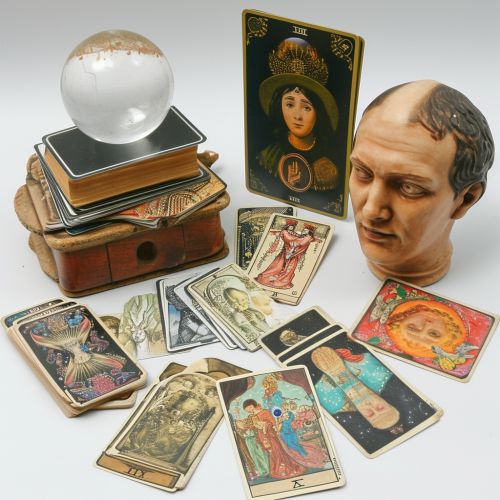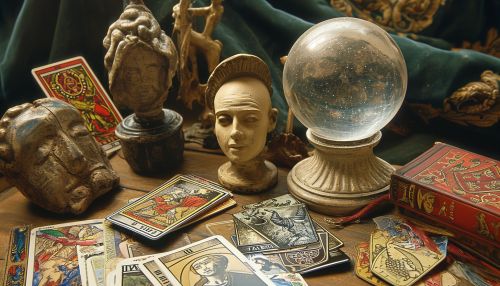Pseudoscience
Overview
Pseudoscience refers to beliefs, theories, or practices that are claimed to be scientific and factual in nature, but lack the empirical evidence, reproducibility, or rigorous methodologies required to meet the criteria of scientific research. Pseudoscience often contradicts established science and is typically characterized by the absence of openness to testing by other experts, lack of systematic practices when developing theories, and continued adherence long after the pseudoscientific theories have been experimentally discredited.


Characteristics of Pseudoscience
Pseudoscience can be identified through its distinctive characteristics, which differentiate it from science. These characteristics include, but are not limited to, reliance on anecdotal evidence, lack of reproducibility, lack of scientific progress, lack of openness to testing by other experts, and absence of systematic practices.
Reliance on Anecdotal Evidence
Pseudoscientific theories often rely heavily on anecdotal evidence, which is considered unreliable in the scientific community. Anecdotal evidence is often used to justify new, untested treatments in alternative medicine, or to support broad claims about phenomena such as UFO sightings or paranormal activity.
Lack of Reproducibility
Pseudoscientific claims often lack reproducibility, a core principle of the scientific method. This means that the experiments or observations that support the claims cannot be consistently reproduced under the same conditions. In contrast, scientific experiments are designed to be reproducible so that the results can be verified by independent researchers.
Lack of Scientific Progress
Pseudoscience often lacks the progressive nature that characterizes science. In science, theories are constantly revised and improved upon as new evidence becomes available. In contrast, pseudoscientific theories often remain static, with proponents ignoring or dismissing new evidence that contradicts their beliefs.
Lack of Openness to Testing
Pseudoscience is often characterized by a lack of openness to testing by other experts. This is in stark contrast to science, where peer review and independent verification of results are critical components of the scientific method.
Absence of Systematic Practices
Pseudoscientific theories often lack the systematic methodology that is a hallmark of science. This includes the formulation of hypotheses that can be tested empirically, the careful design and control of experiments, the rigorous analysis of data, and the drawing of reasonable conclusions.
Examples of Pseudoscience
There are many examples of pseudoscience in various fields. Some of the most well-known include astrology, homeopathy, phrenology, and parapsychology.
Astrology
Astrology is a pseudoscience that claims to divine information about human affairs and terrestrial events by studying the movements and relative positions of celestial objects. Despite its widespread popularity, there is no scientific evidence supporting the claims made by astrologers.
Homeopathy
Homeopathy is a pseudoscientific system of alternative medicine that was developed in the late 18th century. It is based on the concept of "like cures like", which means that a substance that causes symptoms in a healthy person can be used to treat similar symptoms in a sick person. It also involves the process of dilution, where a substance is diluted to the point where there may be no molecules of the original substance left. There is no scientific evidence that homeopathic remedies are any more effective than a placebo.
Phrenology
Phrenology is a pseudoscience which involves the measurement of bumps on the skull to predict mental traits. It was based on the concept that the brain is the organ of the mind, and that certain brain areas have localized, specific functions or modules. Despite being discredited by scientific research, phrenology was extremely popular in the 19th century.
Parapsychology
Parapsychology is the study of alleged psychic phenomena (extrasensory perception, as in telepathy, precognition, clairvoyance, psychokinesis, a.k.a. telekinesis, and psychometry) and other paranormal claims, for example related to near-death experiences, reincarnation, apparitional experiences, etc. It is considered by the scientific community to be pseudoscientific as it continues to explore where the conclusive proof of psychism has remained elusive.
Impact of Pseudoscience
Pseudoscience can have a variety of impacts on society, ranging from the benign to the harmful. On one hand, belief in pseudoscientific ideas can be relatively harmless and can even provide comfort or entertainment for people. On the other hand, pseudoscience can lead to harmful or dangerous practices, can be used to justify discrimination or bigotry, and can undermine public understanding of science.
Criticism and Controversy
Pseudoscience is often criticized by scientists for its lack of adherence to accepted scientific standards. Critics argue that pseudoscience can mislead the public, distort public policy, and even lead to harm when pseudoscientific beliefs are used to justify dangerous or ineffective medical treatments.
